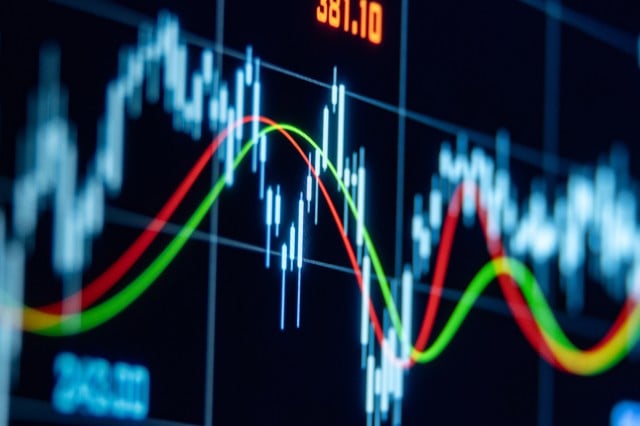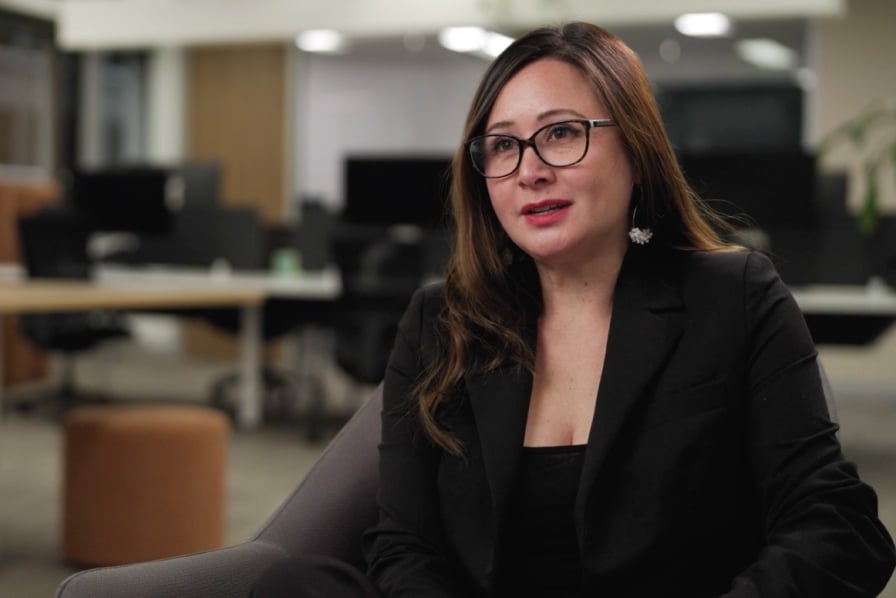Beyond diversification
In a fast-changing world, advisers are re-thinking what great portfolio construction looks like. Old portfolio playbooks no longer hold, markets behave in unpredictable ways and clients increasingly want portfolios that reflect their values — without compromising performance. This means asset allocation needs to be more active, more informed and more purposeful than ever before.
We all know the one constant in markets is change. But it’s the direction and magnitude of change that are hard to predict — and recent events have delivered unexpected outcomes.
Today’s markets can’t be easily navigated through a traditional or static portfolio lens. Recent US trade policy announcements have triggered fresh volatility and challenged long-held assumptions. Shifts away from the US dollar as the global reserve and rising scepticism around US Treasuries as safe haven assets have added to investor uncertainty, according to John Woods, Deputy CIO and Head of Multi-Asset at Australian Ethical Investment.
“Normally, an equity fall of this magnitude would be met by a large drop in bond yields, but this time it didn’t — something that challenged many investors looking to adapt,” Woods says, referencing the April ‘Liberation Day’ tariff announcement, which saw equities fall but Treasury yields remain elevated.
While factors like the FOMC’s reluctance to flag rate cuts or the unwinding of bond trades may explain some movement, Woods highlights a deeper shift: global reserve managers — sovereign wealth funds and central banks — are becoming more hesitant to hold US Treasuries.
“This is warping markets and forcing investors to re-think the roles certain assets play in a portfolio,” he explains.
These dynamics may prove temporary in parts, but they’re reshaping how markets price risk — and how portfolios need to respond.
For advisers, this only adds to the complexity of building portfolios that balance resilience, performance and purpose — especially as clients expect strong outcomes alongside clear values alignment.

We all know the one constant in markets is change. But it’s the direction and magnitude of change that are hard to predict — and recent events have delivered unexpected outcomes.
How we’re allocating now – A total portfolio approach
Identifying the source of dislocation is one thing, adapting to it is another.
“There will be times when it’s difficult to diversify away from certain risks, or when certain asset classes are suited to different styles and different investment approaches. We want to be able to exploit that as much as possible when they are happening,” Woods says.
This could mean targeting different sources of alpha in different asset classes, including in private markets, or finding protection in traditionally unlikely but opportunistic places.
“What’s happening in the United States has brought our focus back to our local [Australian] bond market where quality and currency runs more in our favour,” Woods says.
Meanwhile, the credit market is offering better downside protection and steady income in comparison to global equities, where valuations are high and there’s less protection from the capital structure, Woods describes.
“The concept of a total portfolio approach differs from a traditional strategic asset allocation (SAA) approach. We don’t just decide on our mix of asset classes and then look for the best opportunities in each asset class in a siloed fashion - which is a limitation of an SAA approach. Instead, we combine a top-down, bottom-up approach such that each idea in the portfolio has to compete with everything else that’s out there, on a risk-adjusted process. Our asset allocation is more active and fluid than in a traditional SAA approach. So we’re able to combine our views on the current environment with our longer-term and thematic thinking” Woods says.
For advisers, these shifts only add to the complexity of building and defending portfolios that balance resilience, performance and purpose — especially when clients increasingly expect clear values alignment alongside strong financial outcomes.

“What’s happening in the United States has brought our focus back to our local [Australian] bond market where quality and currency runs more in our favour,” Woods says.
Quality filter
There may be times when traditional sources of risk management aren’t working, Woods points out.
“This is when investors might need to go beyond the traditional mindset that bonds are always your best form of portfolio defence. That’s when it’s critical to be able to bring in a quality assessment,” Woods says.
“We’ve been thinking about the risk in US Sovereign Bonds for some years now, so to see the fragility playing out in the US now, doesn’t really come as a surprise. Now the rest of the world is paying attention.”
Australian Ethical’s dual-lens approach also means we start with a rigorous ethical process before looking at specific financial measures. This quality filter underlies all of Australian Ethical’s portfolios.
“Sometimes our ethics process leads us out of a particular market based on non-traditional risk factors — we believe that’s an important and differentiated part of our process. It also helps us to understand the pricing of assets. If something has a high risk premium, then we have more understanding of the risk that’s unfolding and can adapt accordingly,” Woods says.
“Integrating ethics into portfolio construction isn’t just a matter of exclusions — it requires deeper consideration of risks that traditional models miss. From governance risk in sovereign debt to long-term climate exposure in infrastructure, our ethical process helps anticipate these shifts — then folds that insight into a whole-of-portfolio response.”

From governance risk in sovereign debt to long-term climate exposure in infrastructure, our ethical process helps anticipate these shifts — then folds that insight into a whole-of-portfolio response.
Positioning for what’s next
Volatility in equity markets globally this year and towards the end of 2024 has offered opportunities to invest across asset classes at more attractive valuations in areas with longer-term structural tail winds.
Being able to take advantage of opportunities presented by more attractive entry points requires a perspective on the structural mega-trends trends shaping the world, Woods highlights.
“We see climate change as a major threat to the planet's health, which everyone’s ethical and financial goals depend on. And when you consider the role capital can play in bringing down emissions and addressing the climate emergency, you begin to see the opportunity,” Woods says.
“We want to be able to take active positions at times where short-term sentiment is making valuations more attractive. We are seeing those opportunities right now connected to the climate transition,” Woods says.
“Being active in the way we deploy our assets is key to helping us not only manage risk and return, but also ensure that capital is flowing to the right places to solve the planet’s biggest and most urgent problems,” Woods says.
“Ethical and responsible investing isn’t just about managing risk and avoiding harm — it’s also about exploiting opportunities, contributing to solutions to society and the environment’s problems and positioning for the future. In a world of disruption, we’re able to find differentiated sources of alpha and diversification that other investors overlook — while giving advisers a portfolio they can believe in, and confidently stand behind,” he says.
Australian Ethical Investment’s Multi-Asset Funds
For advisers, building truly resilient portfolios that also reflect clients’ values is harder than ever — especially without the resources to deeply research every asset class or ethical screen.
That’s where Australian Ethical’s Multi-Asset Funds can help. We manage the complexity for you: with full ethical integration, access to private markets and forward-looking asset allocation — all in a professionally constructed diversified portfolio.
This information is of a general nature and is not intended to provide you (or your clients) with financial advice or take into account your (or your clients’) personal objectives, financial situation or needs.
Australian Ethical does not guarantee the performance of any fund or the return of an investor’s capital; past performance is not a reliable indicator of future performance. Your use of any of this information is entirely at your own risk and Australian Ethical Investment Ltd. Accepts no liabilities for any errors or omissions.
Investing ethically and sustainably means that the investment universe will generally be more limited than non-ethical, non-sustainable portfolios in similar asset classes. This means that the portfolio(s) may not have exposure to specific assets which over or underperform over the investment cycle, and so the returns and volatility of the portfolio(s) may be higher or lower than non-ethical, non-sustainable portfolios over all investment time frames.
This document provides an overview or summary only and it should not be considered a comprehensive statement on any matter or relied upon as such. You and your client should consider our Financial Services Guide (FSG), super Product Disclosure Statement (PDS) , managed funds Product Disclosure Statements (PDS) and Target Market Determinations (TMD) available at australianethical.com.au.
This information is provided by Australian Ethical Investment Ltd ABN 47 003 188 930, AFSL 229949 as Responsible Entity for the Australian Ethical Managed Funds and offeror of the interests in the Australian Ethical Retail Superannuation Fund (ABN 49 633 667 743,USI AET0100AU, AFSL 526 055), issued by the Trustee, Australian Ethical Superannuation Pty Limited (ABN 43 079 259 733).
© 2025 Australian Ethical Investment Ltd.



